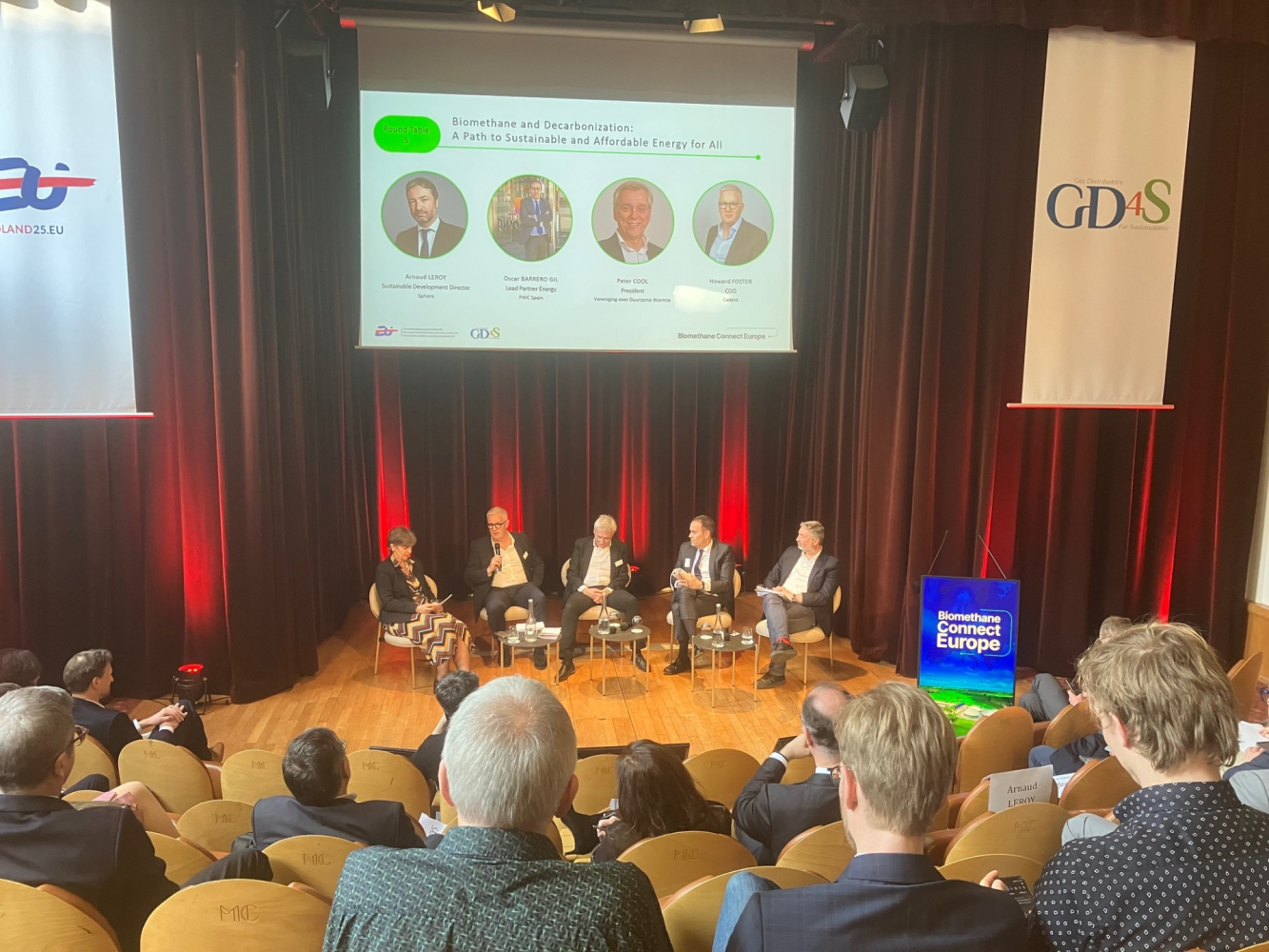Over the past week, we’ve had the pleasure of joining our European gas network and regulatory colleagues at the Biomethane Connect Europe event to discuss the future of the gas network across Europe and in particular, the role of biomethane. It was a refreshing few days, hosted by GRDF in Paris with the Gas Distributors for Sustainability (GD4S) group of companies.
It was clear from the event's start that our French colleagues have much to be pleased about. Through carefully structured policy and subsidy support, they lead the way in biomethane production with over 700 connected sites producing 13 TWh of biomethane per year and an impressive ambition for four-fold growth by 2030. Connecting two new sites every week is a testament to the collaboration between producers, networks and their energy regulator.
The European Union countries combined have the ambition to deliver 35 billion cubic metres of biomethane by 2030. This is equivalent to 366 TWh. The EU might have over 6 times the population of the UK , but they have ten times the biomethane ambition.
The French regulatory policy combines an effective Feed-In Tariff combined with something called a ‘right to inject’ to the gas networks, with the costs of the connection socialised. This was all made possible by the French energy regulator (Commission de régulation de l’énergie, CRE), who have worked in collaboration with the networks to establish the biomethane potential in over 400 discrete zones and investment ahead of need. This has built momentum within the producers and farming communities and enabled connection at pace.

Round Table discussion - Host, Howard Forster, Peter Cool, Oscar Barrero Gil & Arnaud Leroy
The French model has worked, with double digit growth in biomethane production. It is clear that CRE believe this model would work across other European countries. The Danish, in particular, are putting farming at the centre of the debate, with biomethane as just one of the benefits of what was called ‘green refineries’ by Mette Smedegaard Hansen, the Corporate Affairs Director of Nature Energy, a leading Danish biomethane producer. It was clear that making things easy and profitable for farmers was a winning strategy. Farmers can benefit from more than just food production, with new strategies around waste management, fertilisers, biodiversity, decarbonisation, energy production and energy resilience putting them in a position to create profitable circular economies around all their ‘molecules'. Benefits were identified in thinking about these aspects together rather than in siloes. This maybe something helpful for DEFRA and DESNZ to consider.
It was also fascinating to hear that there was no talk about the decommissioning of the gas networks (either distribution or transmission), with governments committed to the longevity of the gas networks due to the need for energy resilience and the combined benefits of having both. The French Government, in particular had fully assessed the gas network longevity, making it clear that decommissioning of only 3 to 5% was likely by 2050.
A commitment to ongoing investment in gas networks was made at the event. When tested, the position was clear. Gas networks provide resilience, the introduction of home-grown energy in the form of biomethane reduces dependence on imported gas, and the gas network enables lower overall investment in the energy system and particularly in the capacity of electricity networks. This point was made strongly by Peter Cool from the Netherlands (from the Association for Sustainable Heat - Vereniging voor Duurzame Warmte), whose study on hybrid heating demonstrated both a reduction in the costs to consumers and investment in the electricity network, alongside a 75% saving in carbon emissions.
It’s clear that there is more potential here and aspects that can be directly applied in the UK . The utilisation of waste for the provision of energy seems like an obvious step in a world where there is too much waste, and enabling farming communities to benefit also seems sensible. We look forward to further collaboration with our European neighbours and bringing the learning to the UK .
Cadent is the UK’s largest gas distribution network with a 200-year legacy. We are in a unique position to build on strong foundations whilst encouraging the curiosity to think differently and the courage to embrace change. Day to day we continue to operate, maintain and innovate the UK’s largest gas network, transporting gas safely and protecting people in an emergency. Our skilled engineers and specialists remain committed to the communities we serve, working day and night to ensure gas reaches 11 million homes from Cumbria to North London and the Welsh Borders to East Anglia, to keep your energy flowing.
Here at Cadent we support the Government’s plans to reach Net Zero by 2050. That means we’re backing the introduction of hydrogen as a low carbon alternative to natural gas for the future. We know people love the controllability of gas and, with our network already in place, it makes sense to switch to the lower carbon alternative offered by hydrogen, which we believe can keep homes and businesses warm for generations to come.
Cadent manages the national gas emergency service free phone line on behalf of the gas industry - 0800 111 999*
Cadent Gas Ltd is owned by a consortium of global investors.
*All calls are recorded and may be monitored.